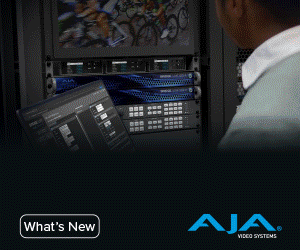The Complete Path to Video Delivery in 4K and Beyond
With NeuLion's newly released white paper, "The Complete Path to Video Delivery in 4K and Beyond," Eric Grab, NeuLion Co-CTO expands further on how the introduction of 4K is shaping video quality, video interactivity, and the future of 4K technology. View the full white paper from NeuLion here: http://www.neulion.com/fls/30000/pdfs/NeuLionWhitePaper_ValueOf4K.pdf

What does the introduction of 4K mean for video quality?
At four times the resolution of HD, 4K (or Ultra HD) increases the level of detail and realism and provides an enhanced visual experience with crisper text and graphical overlays. Getting up close and personal with an immersive video experience also helps to increase audience engagement times, which allows providers to deliver more ads with which users will interact during their viewing.
Why is the "tiny pixel" so important for visual reproduction?
Tiny pixel is the smallest addressable visual element, and it is still evolving. It is classic tradeoff of performance and cost. It is a challenge to have a pixel represent all the color, motion, and brightness of reality. Pixels also can do different things depending on what their neighboring pixels do, or how they are viewed from an angle. Thus, it is instructive to understand what pixels can do now, and in the future.
You mention the many types of content...why is it so important to have different workflows for each type?
The main difference we see is live vs. non-live. Live generally is about preserving reality, and working with the challenges of the distribution. Non-live (or on-demand) content can have many variants of artistic intent, including tuning of lighting, color and composition. There are many aspects that are similar, and all video will benefit from increasing quality of capture through distribution.
Why, in your opinion, has video interactivity become so successful?
Unlike traditional broadcasting which is one-way, interactivity in the OTT video experience (be it social integration or other) helps put viewers in control of their experience. It creates an engaging, personalized activity that can be customized. And perhaps most important, rapid feedback enables interactivity creators to see what is effective, and what is not.
With a rapidly changing technology landscape, how should one use technology to effectively protect their business?
Rapid changes in the technology landscape leads to increased consumer and business expectations. Many of the changes work together. The important premise of the paper is that you cannot just do one, such as only focusing on visual quality. You need to also leverage the technology to enable multiple screens and increasingly sophisticated interactivity. Being able to include all the aspects of value, and do it quickly will protect the business for the long term. It is why we at NeuLion work to integrate everything into our comprehensive platform.
And why is the changing technology landscape a threat to business security?
Building on the answer above about changing technology: The value consumers place on experience is changing. Expansive choice, control, and quality will be expected. Those who do not embrace the improvements will be at a disadvantage to those that do.
What type of role does immersive audio play in completing user experience?
There are two aspects to an immersive audio experience. One is increased realism, which is always good. This can include better clarity, more realistic positioning, and sense of direction of the sound. Second is giving the user the choice of what they want to listen to. Different audio feeds for announcers, players and positions—like we deliver via the NeuLion Digital Platform—can help make the experience more personalized and interactive and therefore more engaging to the end user.
Describe your NBA Case Study and how it reinforced the benefits of 4K for live sports viewing.
Watchers immediately saw and appreciated the picture details afforded by the 4K video stream. Once they saw and felt the immersion, many in the room said that it would be hard to go back to viewing in just HD (1080p) quality. The texture of the court, the lettering on the seats, and even the tattoos of the players were all visible. Also, the motion during the game had a smoother, more fluid appearance because it was streamed at the higher frame rate of 50 frames per second. We made this work through the open Internet, proving that 4K is ready now.
You mention other aspects of video quality in UHD and that 4K is only the start - what else should we be expecting?
As mentioned in the paper, there are several aspects to increasing video quality, including increased range of brightness (also known as High Dynamic Range or HDR), increased frame rate to show the extra detail in motion, smoother gradients in color (8 bit vs. 10 bit), and increased color realism (color gamut). It is exciting to see HDR already making its way into television displays, since it does a lot to increase image quality even when viewed from a distance. However, to bring this back to a key point, simply increasing visual quality is not enough. It needs to be coupled with increased accessibility and interactivity to be compelling and sustainable. NeuLion will be there it help navigate through the changes, and to continue enabling state-of-the-art OTT video streaming experiences.





